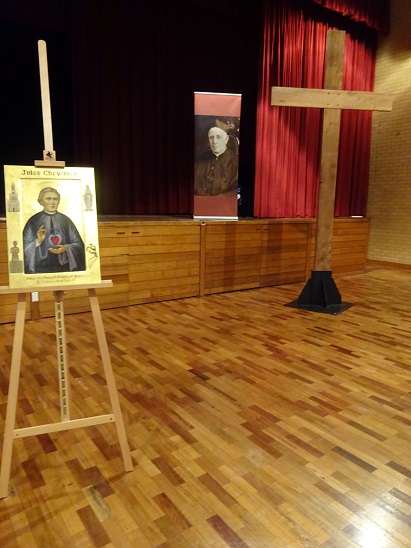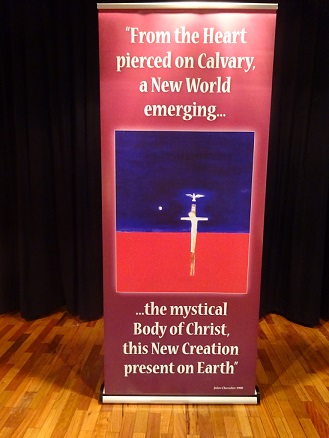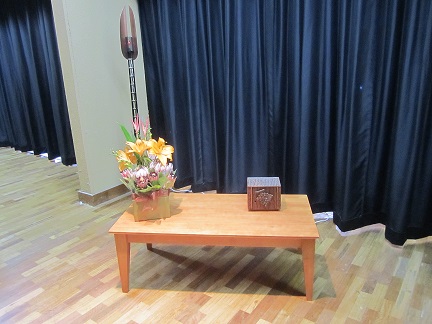Peter MALONE
24 Hours to Live
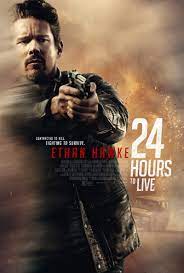
24 HOURS TO LIVE
South Africa, 2017, 93 minutes, Colour.
Ethan Hawke, Qing Xu, Paul Anderson, Rutger Hauer, Tyrone Keogh, Nathalie Boltt, Liam Cunningham, Jeremy Yong.
Directed by Brian Smrz.
This is a slam bang action film, appreciated by those who enjoy fights on the screen – and there are quite a lot, and quite a number of shootouts. The average audience might find this all too much but the fans have been strong in praise of the use of the genre conventions.
It is a South African film, praise of the African terrain in the in the opening, a switch to Florida, switch to Hong Kong, then to Cape Town for the final action. Vistas of Hong Kong and plenty of vistas of Cape Town, Table Mountain, the Bay and scenic highlights.
The plot is complicated. Initially, we see a Chinese agent with an African passenger in the van, cuffed – and then an ambush with plenty of shooting, the agent escaping with her detainee. Change to Florida, a tranquil scene of a hired killer, Travis, Ethan Hawke in action mode, talking with his father-in-law, Rutger Hauer, and lamenting the death of his wife and son. He is contacted by a colleague, Jim (Paul Johnson) who insists that he go into action again even though he is on hiatus. The outreach is from a South African organisation, exploitative, run by Liam Cunningham. Travis is hired to kill the Chinese agent.
He visits Hong Kong, meet her very gentlemanly English-accented son, is reminded of his own loss. He then goes to Cape Town to confront the agent and kill her. He has all kinds of contacts. Her plane is cancelled, he approaches her, they go for a meal, to a hotel for sex, he plans to kill her in the shower but resists. But, when he goes downstairs, she pulls a gun on him, he shoots her but misses, she shoots him but hits her target. He dies. (A bit early in the film Ethan Hawke to die!)
However, this is a set up, he is taken to medical facilities and a doctor owned by the organisation and he is revived. However, he has 24 hours to live, a timer inserted in his arm. However, he has a change of heart, always remembering the death of his wife and son, escapes, tracks down the agent, her son having arrived from Hong Kong, and he then begins a mission to help the agent, to rescue her detainee who is to give testimony to the United Nations against the organisation.
And, all this happens, not without car chases, crashes, pursuits through the streets of Cape Town, a lot of shooting, his infiltration into the building. And some hallucinations about his son and wife because of the drugs. His connection, Jim, has a change of heart, sits waiting with the head of the organisation for the ultimate.
The screenplay presupposes that audiences will accept the heroes reviving, having 24 hours to live, yet having all the strength and determination to go into the action of any screen hero.
All that accepted, the fans have praised it as their kind of shootout, fights, action entertainment.
Dangerous/ 2021
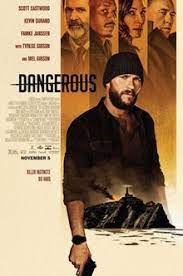
DANGEROUS
Canada/US, 2021, 99 minutes, Colour.
Scott Eastwood, Tyrese Gibson, Famke Janssen, Kevin Durand, Mel Gibson, Brendan Fletcher, Brenda Bazinet.
Directed by David Hacki.
The kind of action show that is popular with audiences and the target of critics. And it happened with this film.
The show has a reasonable kind of plot, a focus on the assassin with psychological problems, his escape and the pursuit, his brother’s secret, the island, helping his family, the pursuit of mercenaries, plenty of fights, Japanese gold from World War II, and final action with guns on the deck of the hidden submarine. (Who could ask for anything more!).
Scott Eastwood resembles his father so often. Kevin Durand is a regular villain. Tyrese Gibson is serious as the local sheriff, family Janssen as an FBI agent in pursuit of the assassin. There are some comic tones with the assassin continually phoning his doctor for advice, the doctor oblivious of the actual situation, seeing the best in things – and a light touch from Mel Gibson as the doctor.
One of those easy action show entertainments.
- A popular action show?
- Locations, the island off the West Coast of America, details of the island, the hotel, the mountains, the interiors, the secret tunnels, the submarine location? The musical score?
- The focus on Dylan, Scott Eastwood like his father, character, psychopath, violent, controlled by drugs, the continued phone calls throughout to his doctor, the doctor putting the best interpretation of the situation and not realising the reality? His escape, the agent in pursuit, his going to the island, the mysterious death of his brother, his family, his mother disowning him, yet his trying to save them? The sheriff, arresting him, putting him in prison?
- Is one, his henchmen, arrival on the island, the violence, the killing of the sheriff? The pursuit of Dylan?
- Dylan, the help of Massey, the help of Jo, out of the hotel, climbing the crags, searching for the tunnel? Cole and his pursuit?
- The seriousness, the comic touches with the doctor and his advice, seemingly oblivious of the dangers? Finding the tunnel, knowing his brother had a secret? The discovery of the submarine? World War II, the Japanese gold?
- Cole, the intention to get the gold, forcing Dylan to help? Holding his mother hostage?
- The turning of the tables, to learn and to help, the guns on the deck of the submarine, attacking Cole and his thugs?
- The presence of the agent, pursuing Cole, her being involved in the climax?
- The final resolution, saving the family, the gold, the future?
Women Talking
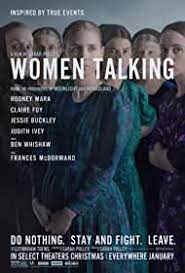
WOMEN TALKING
US, 2022, 104 minutes, Colour.
Rooney Mara, Claire Foy, Jessie Buckley, Judith Ivy, Sheila McCarthy, Frances McDormand, August Winter, Ben Whishaw.
Directed by Sarah Polley.
Much of this drama consists of women talking. And they have serious matters to talk about.
The basis of this film, chronicled by Miriam Toews, is a Mennonite colony in Bolivia, the early 2000s, when a number of the men sexually harassed, raped, many of the women in the Colony. This film relocates the Colony to North America, the same time period, men arrested, charged, and the rest of the men of the Colony going to the prison to support the accused.
They leave the women behind. The women then gather to take a vote, three main issues: stay, stay and fight, leave. These issues are debated throughout the film, the audience listening to the various arguments pro and con, shifting in opinions and decisions, hearing the final decision and incurring with it.
There is a voice-over narrative, a woman telling the story of the past to a child who was not born at the time. The style of the film includes many close-ups, extreme close-ups of the various women, especially during the discussions, the ranges of opinions, moods. And there is a drained colour look about the film’s part.
Audiences have found the conversation stimulating, raising the now-familiar issues of patriarchy, control of community, laws and regulations, women’s status reduced, sometimes virtual slavery, offered no opportunities for education, illiterate, living a narrow life in the Colony. Men are absent from the film except for the friendly August, whose mother was expelled from the colony because of her questions, he going to the University but returning to teach the boys, commandeered by the women to act as minutes-taker for their discussions, his taking the notes, sometimes intervening but told to stop, apologising, but always offering a sympathetic ear. He is played by Ben we shall. The only other male presence is the driver of a loudspeaker through the Colony urging everyone to participate in the census of 2010, and the song can dream Believer significantly playing (and recurring during the final credits). One of the husbands returns and brutalised as his wife. And there are quite a number of boys going to school.
Sarah Polley has written the screenplay and directed the film, a Canadian actress who made a number of significant films, especially during the 2000 is. She is obviously strongly committed to this theme.
And the female cast is impressive. After 40 years in films and television, Judith Ivy and Sheila McCarthy are significant veterans and represent the older women of the Colony. Frances McDormand, the executive producer, also has a cameo role as an elder who disapproves of the decisions. The younger generation, three striking actresses, a sympathetic Rooney Mara, harassed Claire Foy, an angry Jessie Buckley. And there are several younger actresses who portray the next generation who participate in the meeting.
The audience listens to the arguments, probably concurs with the final decision – and wishes the women well as the huge procession of carts and women and children on foot leave for what may or may not be a promised land. But, they have asserted themselves, vindicated.
- This film based on actual events? Mennonite community in Bolivia? Transferred to a North American community?
- Audience response to the issue, the men, the patriarchy, controlling the Colony, the rules, keeping the women in ignorance, illiterate, domestic abuse, sexual abuse, the law, the men defending the abusers?
- The setting, the Colony, the fields, the crops, the homes, the roads, equipment? The bleached colour design? Contributing to atmosphere? Echoes of the Amish and other communities, the old-style, black dress, work, yet the modern implements?
- The cast, strong women, the different generations? The absence of men except for August? The presence of the young boys?
- The situation, the narrator, the story, told to the yet to be born child? To have a record?
- The situation, the gathering, the discussions, the decisions to be made? To stay and to live with the situation? To stay and fight? To leave? How well the explanations and arguments for each position? Women changing their positions?
- The group of women, at prayer, religion and faith, the role of God, talk of entering heaven or being refused? The prayer throughout the film, the quotations from the Scriptures, the singing of hymns, Nearer my God To thee?
- The impact of the discussions throughout the film, audience attention, listening to each woman, the intellectual response, the emotional response, the repercussions for family, departure, leaving men and adolescent children behind? The uncertainties of where to go? No maps? No knowledge of maps, no reading?
- The decision to leave the discussion and decisions to a committee? The families represented, the women and three generations present? The different perspectives?
- August, the background of his mother ousted from the Colony, his leaving, the University, his death, his return, to teach the boys, asked to keep the minutes, his ability to write, his opinions and the women stopping him, his apologies? His affection for Ona? Expression of his affection? Her responses, the distance between them?
- The leadership of the older women, Agara, matriarch, age, experience, always in the Colony, her family, her daughter, the next generation? The words of wisdom, faith, the Scriptures? Greta, also a matriarch, her daughter and granddaughters? The stories of the two horses, her driving the cart, swerving, looking ahead to see the long distance? Their various interventions, ideas, emotions?
- The presence of Scarface Janz, age, experience, withdrawing from the discussion, observing, judgemental, staying?
- Melvin, trans, raped as a woman, giving birth, dressing as a man, staying mute, with the children, you name, eventually speaking, sharing in the exodus?
- The next generation, Ona, quiet, calm, ideas, wanting to stay, the repercussions, changing her mind? The influence of the other women? Salome, her children, fiery and spirit, children, moods, attacking Ona? The contrast with Mariche, her moods, protectiveness, her children, her mother? The sick child? Walking a day and a half to get the antibiotics? The different interactions, attitudes towards August, support, criticisms? Their opinions, the changes?
- The younger generation, the girls and their friendship, the girl smoking, her physical health and collapse, relationship to their mothers, grandmothers? Their attitudes, participation, decisions?
- August, his keeping the minutes, making the lists, interventions, apologies, the request to make the list? The map, showing it to Ona? The Southern Cross, fist and thumb, directions for South? The final decision, his love for Ona, her having to go? The final words, helping Agata and her health, waving them away?
- Klass and his return, Mariche going home, returning battered with arm broken the next morning? His drunkenness?
- The decision to go, the young girls getting greatest horses, the carriages, the message going around the community, everybody packing, the long line, the carts, the women, the children,, drugging him, taking him?
- The vision of the long road ahead, the uncertainty and the destination, the self assertion in leaving, an assertion of women, the condemnation of men’s brutality?
We are Still Here

WE ARE STILL HERE
Australia/New Zealand, 2022, 82 minutes, Colour.
Elijah-Jade Bowen, Deborah Brown, Evander Brown, Lisa Flanagan, Natasha Gorrey Furber, Audrey Martin, Leonard Matthews, Sean Munungurr, Clarence Ryan, Robert Taylor, Tioreore Ngati-Melbourne.
Directed by Chantelle Burgoyne, Dena Curtis, Richard Curtis, Mario Gaoa, Danielle MacLean, Miki Magasiva, Renaé Maihi, Tracy Rigney, Tim Worrell, Beck Cole.
A strong title. A defiant title.
And, as we would expect, a strong film, a defiant film. It opens with an animated story, two women fishing, the 18th century, then suddenly out of the waves, the flags of Britannia, Captain Cook’s ship… And the waves overwhelming. The film progresses from here from, eight short stories interwoven, not straightforwardly told one after the other, eliciting emotions, stories of Maori tribes and fight back, defeats, tales of aboriginal men and women, trekking through the desert in the 19th century, a lone soldier in the trenches at Gallipoli, protests on graffiti writing, the burning down of Captain Cook’s house in Fitzroy Gardens, and police oppression as aboriginal men try to buy alcohol in the Northern Territory Foodtowns. And, within this, a leap forward to 2074, post-apocalyptic misery.
This is an Australia/New Zealand co-production, with financial support from both countries and, particularly, Screen Australia and finance from most of the states and the Northern Territory. All the writers are indigenous and most of them have directed their screenplays. As might be expected, the impact of each story is quite different from the other. But it is the cumulative effect of the interweaving of the stories, protagonists becoming angrier, the audience also becoming angrier on their behalf, always challenged.
Which means then that the audience is invited to think back over the last 250 years, to Captain Cook and the issue of “terra nullius” and some of the ironies of Captain Cook’s cottage transported to Melbourne, a tourist site. We see the hostile attitudes of the whites in central Australia in the 19th century, the automatic aggression towards “black bastards”. Maori communities and individuals, seen on the war path, local meetings to decide whether to fight the British or try to live at one with the newcomers to New Zealand.
Particularly moving, with a touch of the comic, is the lone soldier in Gallipoli, abandoned in the trenches, starving, ill, when a bag is suddenly thrown in over the barricade by a Turk, food, clothes, and the soldier tosses his clothes across leading to an amicable meeting, each in their opposite uniforms as they have to hasten back as hostilities resume.
There is passion in the Melbourne scene, paintings of Lives Matter, graffiti, some tranquility in Fitzroy Gardens, fascist groups and brutality, rebellion. And there is a sense of frustration not only for Ken, the protagonists, but for the audience watching as he buys alcohol, day after day, accosted by the Wlocal policeman, quoting law and regulations to cover his inherent racism. Interestingly, the last we see of Ken is his walking away, laughing in the face of such oppression.
There is a summary of the stories and faces at the end, to remind the audience: We Are Still Here.
- The intention of the film? Pride and defiance? Indigenous peoples? The history in the Pacific? The status of indigenous peoples in the 19th century, 20th century, 21st-century? The future?
- New Zealand an Australian production, financial support, the writers, directing their scripts, their perspectives? A range of assertion, anger, critique, pathos, humour?
- The structure of the film, the animation with the opening, the women fishing, the reef, Captain Cook, the ship, the flags, the consequences? The return to the Captain Cook theme with his cottage in Melbourne, tourist centre, the couple deciding to burn it down in protest? The continuity the theme with the women, the changes of the times, the reef, the building of the city, relationships, generations and children, reunited?
- The intercutting of the various stories, the effect, leaving aspects of the plot in abeyance, dramatic stopping, new elements, returning, the emotional effect?
- The 19th century, central Australia, the soldier, searching for his family, the confrontation with the Elder and his family, the presumption against black pastors, racial hostility, superiority, the Elder and his confrontation, the family with their woman errors, the soldier with his gun, the older offering to help, leading, trust and mistrust, camping, exchanging names, the dangers, the Elder disappearing, the firing of the shot, continuing the journey, the scene of the massacre? And the confrontation?
- The Maori story, the situation, the family, the mother and her wanting peaceful living together, the father agreeing, his leadership, his daughter and the preparation for a marriage, her hair, talking with her father at the slaughtering of the animal, thinking she had persuaded him? The gathering, the warlike speeches, the mother and her looks, the father and his decision, the daughter and her rebellion, challenging her father, changing his position, the warlike chance and dancing together, and the later return defeated?
- The Anzac story, the lone soldier, the vivid portrayal of life in the trenches, reconstruction of the trenches, food, hunger, the uniforms, the touch of despair? Looking at the other lines? The bag with the food, the soldier returning it, the exchanging of uniforms, the touch of humour with his looking Turkish, going to meet the other man, the two in the uniforms, action starting again, this scurrying in each direction? Possibilities?
- The future, 2274, post-apocalyptic, the Elder, the young girl, the dismal situations, his trying to passed on knowledge to his daughter?
- The mother and daughter, Captain Cook’s cottage, the onset of the fascist group, the intrusive mother, her death?
- The daughter, the graffiti, the young man, their interactions, the encounters with the police, the brutality, the protests? The decision to burn down Captain Cook’s cottage?
- Central Australia, the intervention, the sale of alcohol, Ken, with the old man, going to the shop, ruby and her friendliness, there exchanging phone numbers? His slipping in, buying the gold, the jerky, stalked by the officer, his wanting identity, Ken not having his identity, the confiscation of the alcohol? Going back to the old man? The succeeding days, the same process, the officer and his attitude – and friendliness to other customers by contrast? The final confrontation, taking the alcohol, Ken telling him that he didn’t drink anyway, returning to the old man, and his laughing?
- The cumulative effect of this experience, sharing the angers, sharing the defiance, compassion, and the challenge?
Justice of Bunny King, The
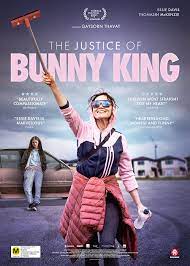
THE JUSTICE OF BUNNY KING
New Zealand, 2021, 101 minutes, Colour.
Essie Davis, Thomasin McKenzie.
Directed by Gaysom Thavat.
While watching this film, the audience may be wondering whether any justice is possible for Bunny King. She is an ordinary citizen, fallen on very hard times, continually making mistakes and alienating authorities, desperate to be with her children.
This is a New Zealand film, an authentic atmosphere in a New Zealand city, ordinary streets, vehicles, the men and women who (before it became less fashionable to carry cash) clean the windows of cars stopped at traffic lights, hoping for some kind of remuneration. There is also the Maori neighbourhood. And, there are foster homes, and offices of caregivers and the bureaucrats who run departments.
Essie Davis gives a very striking performance as Bunny King, on the one hand having to live the consequences of her mistakes, on the other hand very determined, using a variety of means and lies to be with her children. Bunny lives with her sister and brother-in-law and niece, the niece, Tonyah, played by Thomasin McKenzie.
Bunny comes across difficulties at home, her father abusing her his daughter, Bunny’s severe reaction, even to persuading Tonyah to leave the house with her and become involved in her various escapades as she tries to recover her children, buying birthday presents for her little girl but discovering that the children have been removed with no address available for Bunny. Which lead to something of a siege of the department office, police, guns.
There is pathos for Bunny even while we realise that her behaviour is frustrating for herself and for everyone else. We see her children, little girl with disability, a teenage boy. There are some sympathetic carers, there are some harsh people administering the letter of the law.
And, there are all the implications of Tonyah’s story, especially Tonyah eventually accusing her mother not believing her when she told the truth about her father.
There is no definite end for the film. Will Bunny learn from her experiences and be rejoined with her children – or not?
- A New Zealand story, universal story?
- The New Zealand setting, the city, streets and buildings, homes, the Maori community, social work, foster homes? The musical score?
- The title, the focus on justice, for individuals, despite their handicaps and failings, the harshness of bureaucracy?
- Bunny King’s story, her past, marriage, accident, her children, the disability of her daughter, the children being taken from her, trying to get jobs, cleaning car windows in the streets, her friends and associates, her visits to the authorities, the supervisors, the restrictions on meeting her children, the fostering, her intruding in desperation to see the children, this coming back on her, the supervisor, the possibility of getting a home, her Maori friends, pretending the home was her own, removing the pictures, the government visitor? The dress seller, getting clothes for her job interviews? Her being transformed? The encounter with the estate agent, going up to the apartment, his saying she wasn’t renting, her pointing out that he was hitting on her? Her later taking Tonyah and using this apartment?
- Her relationship with her sister, mother-in-law, niece, living in the house, doing the work, supporting the family? The bond with her sister but her sister’s neglect? The brother-in-law, tough, her seeing him abusing his daughter? Her reaction, accosting him, spray-painting the car, smashing the windscreen? Later stealing the car? The appeal to Tonyah, persuading her to go with her?
- Their time together, the planning for the birthday party, going to the shops, the box and stealing the extra goods? Finding the children gone? Not knowing where they were, going to the authorities, accosting them, a kind of invasion, talking on the phone, the police coming, the shooting, her being wounded, Tonyah and her participation, Tonyah’s decision?
- Bunny being taken out, the song, cheerful, acknowledging her mistakes, to make mistakes again? Possibilities?
- The story of Tonyah, at home, age, her parents, with her father, the abuse, her leaving, accompanying Bunny on the adventures, standing by her, and criticising her mother for not believing her? The portrait of her parents, parenting, inadequacies, abuse?
- The picture of the children, their ages, in care, the little girl, disability, bonds with her mother? The son, teenage, talking with his mother?
- The Maori community, friendly, cleaning the windows, inviting her to the house and meals, the matriarch supporting her in pretending the house was hers?
- The portrait of the authorities, those sympathetic, those unsympathetic and bureaucratic?
- A glimpse of the troubles of ordinary people, their failings, their needs, issues of justice?
Into the Labyrinth
INTO THE LABYRINTH
Italy, 2019, 130 minutes, Colour.
Dustin Hoffman, Toni Servillo, Valentina Belle.
Directed by Donato Carrisi.
Labyrinth is a keyword.
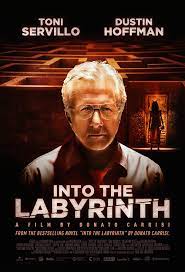 We see are quite elaborate labyrinth during the film, the story of the young girl abducted, kept a prisoner for many years, caught in the labyrinth, tormented, controlled, desperate.
We see are quite elaborate labyrinth during the film, the story of the young girl abducted, kept a prisoner for many years, caught in the labyrinth, tormented, controlled, desperate.
By the end of the film, we realise that the screenplay itself is certainly a labyrinth, taking the audience into various sections but then their having to go back, exits blocked, seeking alternate routes. It is the work of Donato Carrisi see who also made the thriller, The Girl in the Fog.
There are two major strands in the screenplay and they meet only towards the end of the film. One strand is voiced in English, Dustin Hoffman playing Dr Green, a therapist, interviewing the girl and trying to elicit from her the story of what happened to her. The other strand, voiced in Italian, focuses on Toni’ Servillo as a private investigator, spending a long time trying to find the missing girl.
Dustin Hoffman’s sequences are generally confined to the therapist room. On the other hand, the private investigator, roams around, interviewing people, but his searches were complicated by the fact that he is terminally ill.
Various theories about what happened emerge, mysterious abductions of young men, a rabbit disguise and theme, all adding to the mystification. At one stage the two men do meet.
There are also quite some complications in the untangling of the plot, who the abducted girl was, what really happened to her during the abduction, the possible abductors and the role of Dr Green and his motivations for interviewing the young woman.
- The suggestive title? The literal labyrinth of the narrative? The labyrinth of the plot itself? The demands on the audience?
- The Italian setting, the city, offices, therapy rooms, the Italian countryside? The musical score?
- Dialogue in English and Italian? The focus on Dustin Hoffman, the focus on Tony Servillo, the two different plot narratives, times, overlapping, finally bringing the strands together?
- The abduction story, the focus on Samantha, her being found, hospital, identified, the abduction, many years imprisoned? The treatment in the hospital, the hospital staff? Her gradual recovery, memories, communicating? The revelations of her story, abducted, in the labyrinth, her tormentor, the prison conditions, squalor, other girls abducted? The ominous figure of the rabbit?
- Dr Green, the interviews, therapists, sympathetic, urging Samantha to tell her story, the various stages of the story?
- The contrast with Bruno Genko and his story, going back into the past, his being an investigator, his various commissions, seeing him in action, investigations? His health, terminal? As a character, over the years, dishevelled, drinking, ill? His communication with the authorities, with families? His determination to solve the case?
- The film and its elaborating the stories of the two central characters, comparing and contrasting?
- The two finally meeting, the conversation? The background of abductions, the mysterious young man, his growing up, the rabbit, his job, under suspicion? Other suspicious characters?
- The final revelation about Dr Green, the theme of the rabbit, his labyrinth, the interview with Samantha and his playing mind games?
- The effect of the film as an investigation, mystery, therapy, and the revelation of the mind games that the screenplay was playing on the audience?
Australian Province, preparing for our Chapter, April 2023.
Australian Province, preparing for our Chapter, April 2023
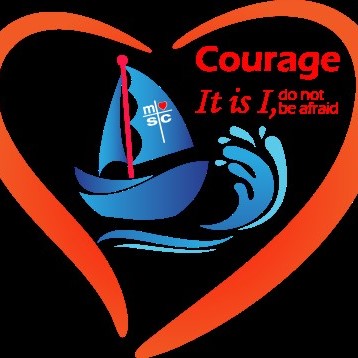
We invite our site visitors to reflect with us and to pray with us. And some photos from Chapters 2010 and 2016.
Missionaries of the Sacred Heart are facing a period of transition – be it here in Australia or in Vietnam, the forces of change are taking place.
Since Covid19, environmental damage, climate change, refugees, migration, and the First Nations ‘Uluru Statement from the Heart’, and from all our reports from the province consultations, the world and the local Church have changed.
We constantly need to review and re-vision our current ministries as well as explore the possibilities for new ones. Transition requires detachment and creativity. This will depend on a true evaluation of our resources and capabilities.
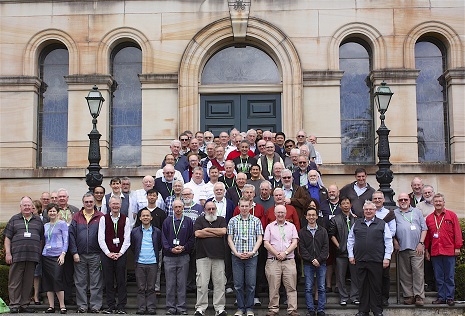
Many movements in Church and society suggest the way: justice for our First Nations people, renewal programs in parishes, environmental movements in the Church and beyond such as the Laudato Si Action Platform; flood and fire victims, victims of violence, abuse, and street people
Can we discern new ways of engagement with our traditional ministries among Indigenous people (in Australia and Vietnam) and in parish ministry (such as missions and supply work), and in spirituality?
We know that our spirituality of the Heart can enable us to respond creatively to the challenges of our times. We have evidence of this being done in our MSC colleges, Heart of Life Centre for Spiritual and Pastoral Formation, the Chevalier Institute, and in many of our parishes.
As a Province, we are conscious of the need “to continually revisit the vision of the founder and nourish and nurture it by our personal study and reflection on the Charism and message of the Founder”. We believe that we have a message and a mission that is, now more than ever, universal (‘ubique’).
It is important to listen to the voice of the Spirit within each of us personally and especially within our communities: “we need to listen to and observe where we find the fire, the passion for mission, individually and in our MSC communities.” In what direction does this point us?
Under the Stadium Lights
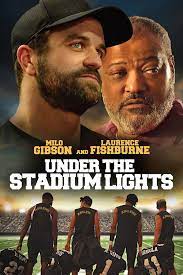
UNDER THE STADIUM LIGHTS
US, 2021, 109 minutes, Colour.
Milo Gibson, Abigail Hawk, Laurence Fishburne, Acoryo White, Carter Redwood, Jermaine Arroyo, Glenn Morshower.
Directed by Todd Randall.
This is very much a film for American audiences, especially those who enjoy American football. It is a sports film – that it also has the background of the Faith film.
It is based on a true story, that of Chad Mitchell, policeman, chaplain, motivator, and the book based on his life and work, Brother’s Keeper. While the film has football sequences, it is more of the work of the brothers’ keeper.
The setting is Abilene Texas, a focus on how important a local football team is for the life and morale of the town. The film shows Chad Mitchell becoming involved with the football team, the conversion experience from complaining about what is wrong with the world to trying to do something about it, morale boosting for the members of the team, personal counselling for three who have serious problems at home. And, this does lead to neglect of his family.
Milo Gibson, son of Mel Gibson, plays the role of Chad Mitchell and his religious earnestness and faith, with many morale boosting segments and exhortations. However, the audience is very glad when Laurence Fishburne comes on the scene, playing a real-life character, Harold Christian, who managed the bar in the town and was a genial support to everyone.
There is a criticism of the film that the three young men who have home problems are black and Hispanic while those who do the good in the film are white.
Nevertheless, this is a very earnest and encouraging film.
- The title and the focus on sport? Friday night lights? The original title of the memoir, Brothers’ Keeper, and the tone of the chaplain and his work with the team and the team members.
- Abilene, Texas, small town America, work in jobs, families, white families, black and Hispanic families, problems and issues? The police? The importance of the football team and success, prestige and self-worth? The musical score?
- The tone of the film, perspectives of the Faith film, the chaplain, his own faith journey, conversion, doing good with the team, but the accusation that he was not caring for his family? Belief, church, prayer?
- Chad Mitchell, his memoir, his role in the police, reputation, family life? His comment about complaining, then realising that he should do good rather than complain? His role with the team, as chaplain, discussions with the football officials, meetings with the team?
- The three central players, black and Hispanic backgrounds, their troubles, filling in the family background, the characters, alcohol, prison, violence? Commentators noting that those helping all white?
- The importance of the character of Harold Christian, age, experience, work in the bar, friendly, supportive, sustaining character?
- The dramatising of the town, the range of people, families, police, players, coaches, the media, social workers?
- Chad, his age, experience, character, relationship with his family, their complaint that he was not protecting them? The family sequences? His conversion? His role as a chaplain?
- The many speeches, Chad and his sincerity, aims, ambitions, faith and humanist perspectives?
- The football, filming of the matches, the touches of training, pep talks? The crowds and supporters? The various strategies for winning?
- A very American film, American football, American support of their teams, the status of the team in the home town?
Me, You, Madness
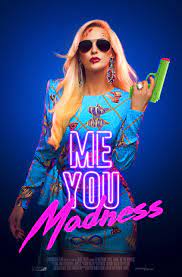
ME, YOU, MADNESS
US, 2021, 98 minutes, Colour.
Louise Linton, Ed Westwick.
Directed by Louise Linton.
This is an oddball film, at best. Very negatively reviewed. Mixed reactions from viewers. It is the work of Louise Linton, the I am deep trivia item revealing, Louise Linton came up with the concept for You Me Madness after falling asleep in a hot car following a trip to the pharmacy. She described a 'Doors-like vision' of an indigenous man telling her to make a movie about a girl-boss serial killer. So she did.
Perhaps best to read the Wikipedia entry to help make a decision – especially the last paragraph in the last line!
Catherine Black, a wealthy and extremely intelligent corporate hedge fund manager and serial killer, has a high-fashion sense and spends her money on expensive cars, clothes, artwork, and furniture. She purposely lures Tyler Jones, a thief and gamer who steals from elderly individuals, including Black's grandmother, to apply for a job as house sitter of her large home in Malibu. As he cases the home, Black roofies him to knock him out, and then gets her nails done. When Jones awakes, Black's girlfriend arrives, and after feeding him organs of a frat boy while mocking him in Mandarin, they engage in an evening of drugs, sex, and bonding.
Black, after killing a man who was making suggestive faces at her in an exercise session, comes home and orders Jones to leave her house. While she takes a shower he steals her car and jewelry. She analyzes Jones' car's tracking device, calls him, and reads off the times and locations that he and his partner-in-crime, Chad, committed recent thefts. He brings the car and jewelry back in exchange for her not giving the Los Angeles police the incriminating evidence, but she explains that promises are meant to be broken. As they physically fight, and Jones runs from Black, he discovers her freezer full of human body parts, upping the stakes and forcing Black to vow to kill him even as it becomes obvious to both that they are madly in love.
Relaxing after their final series of fights, in which Black could have killed Jones by any of several methods, they simultaneously agree to marry. Black begins taking medication to control her need to kill, and Jones gives up a life of crime, finishes engineering school, and pays back Black's grandmother and his other victims. They have become vegans.
End credits show Catherine and Tyler happily raising a dog and three children.
On the other hand, from an IMD blog:
Refreshing oddity
This truly is a high-concept movie. It's funny, perplexing and honest. … Finally, it's a social commentary on the currently prevalent societal expectations toward women and men. In short, this movie is weird, entertaining and thought-provoking. You should definitely watch it.
Eo
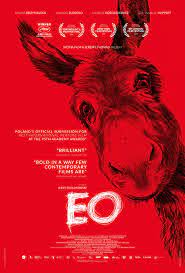
EO
Poland/Italy, 2022, 88 minutes, Colour.
Sandra Drzrymalska, Isabelle Huppert, Lorenzo Zurzola, Mateusz Kosckukiewicz.
Directed by Jerzy Skolimowski.
Eo a donkey – and his name intended to sound like a donkey. This is his story, a kind of EOdyssey as the events of his life and travels take him through Poland and to Italy.
Film buffs will be eagerly making comparisons with French director, Robert Bresson’s, 1956 classic, Au Hazzard, Baltazar, his invitation to an audience to share the experiences of a donkey. Eo is very much a 21st-century donkey’s tale, empathy with the donkey, just as we take for granted saying a birds-eye view, this is a donkey’s eye view of people and the world around him. But, it is also the audience eye-view, looking through the lens at Eo, looking at what he looks at, but we can hear, we can observe, we can make connections. Eo does make emotional connections.
The first emotional connection we see is his circus performance with Kassandra, his seeming to enjoy this, his strong bond with Kassandra who manifests great affection for him. (And this is all presented with a pervading colour red, this colour coming back throughout the film, making some of the sequences, especially the walking of a mechanical dog, more than surreal.). We like Eo, the camera lens loves him, his face, his body, his trotting, the range of his activities.
The circus is disbanded because of bankruptcy issues and animal-lovers protests, transported with horses, life in a stable. Somebody has remarked that the film is something like a tour of contemporary Europe, from the donkey’s point of view, critical, and from the whole human point of view. There are scenes at a farm, there is an unexpected local football match, passionate fans, celebrations, the winners happy that he has wanted in, the opposition brutalising the fans and then bashing Eo. He recovers with the help of a sympathetic vet, a stable hand suggesting that Eo be put down, and later a moment of donkey irritation hoofing him.
He wanders, encounters a range of people, transported in a van and an interlude which we see and hear which Eo doesn’t, the driver chatting up a hungry local, inviting her into his truck, and then, shocking us, but Eo not knowing it, his throat is slit. Then another character comes in, a young man whose truck breaks down, wonders to the scene of the killing, chats with Eo and takes him off, thir eventually coming to an Italian château and the young man’s encounter with his stepmother, a surprise cameo from Isabelje Huppert. And, a shock revelation that he is a priest – a bit odd because the actor playing him was only 20 or 21 at the time. Some family complications and we return to travels with EO, turning up at a farm with cattle and being herded with them.
Writer-director, Jerzy Skolimowski has made films since the 1960s, some notable films in England early in his career, King, Queen, Knave, Deep End, and with his later films, a focus on his native Poland and the Solidarity movement of the 1980s, Moonlighting.
He won the Jury Prize at Cannes, 2022.
- Audience response the discovering the central character is a donkey? Identifying with Eo, his perspectives? In bringing a human perspective, observing and interpreting character and events?
- A Polish film, Polish sensibility, the variety of Polish locations, circus, farms, the open road, the football match, the pub celebration, the mountains, the spillway of the dam, into Italy, the Château, running with the horses, herded with the cattle?
- The atmosphere of the musical score?
- The surreal device of having the opening with pervasive bright red, the return of red to many of the sequences, and the surreal episode of the mechanical dog filmed in red?
- Audiences adjusting after the opening, the circus act, Cassandra and her affection for Eo, the harsh circus and, cruel with Eo, the arrival of the bank officials, bankruptcy, closing the circus, the animal-lovers protests and defiance?
- The director’s later statement that the film was motivated by love for animals?
- Characters and events scene with a donkey’s perspective? The “psychologising” of the donkey, his looks and expressions, games, response to affection, response to cruelty (and hoofing the stable hand)? The suggestion of his having memories and their affecting his feelings?
- The human perspective on the donkey’s perspective, observing, interpreting, knowing more about the characters than he did?
- A journey through Poland into Italy, the range of people, ordinary life, farms, vets, the football match, the beating, the healing? The film’s commentary on the range of human behaviour?
- The scenes with the horses, at the circus, travelling in the van, in the stables, the care in washing and grooming the horses and neglecting the donkey? Racing with the horses? The later scenes with the cattle? The images of other animals throughout the film, the foxes and their being hunted, kept, sold? The insects?
- Sympathetic human beings, Kassandra, the vet, the truck driver, Vito, taking Eo, feeding him, talking to him, at the house – Eo not being aware of what was going on inside the Château?
- The football sequence, the game, enthusiasm, the fans, the clashes, in the bar, the attack, and the bashing of Eo?
- The episode with the truck driver, the hungry woman, his cheerfulness, giving her the food, joking about the sex, her rushing away, and then his throat being slit?
- Vito and the Countess, his truck breaking down, observing, taking Eo, going home, his saying Mass, the Countess and her assistant, getting the phone call during the Mass, her going out, his standing at the altar? The meal, the situation, his stepmother, her selling the house, her tantrum with the crockery breaking, the cutlery, throwing them at Vito? The revelation of his gambling, her not all giving him any money? And the glimpse of the kiss?
- The overall effect of watching such a different kind of film?

